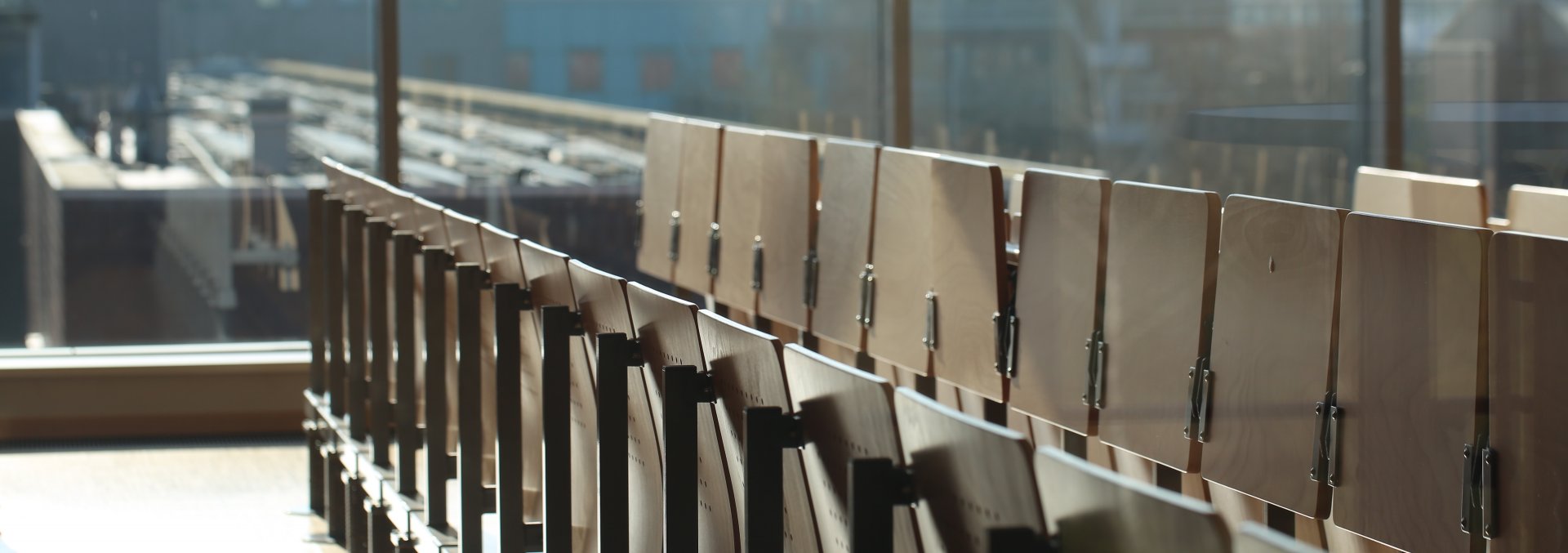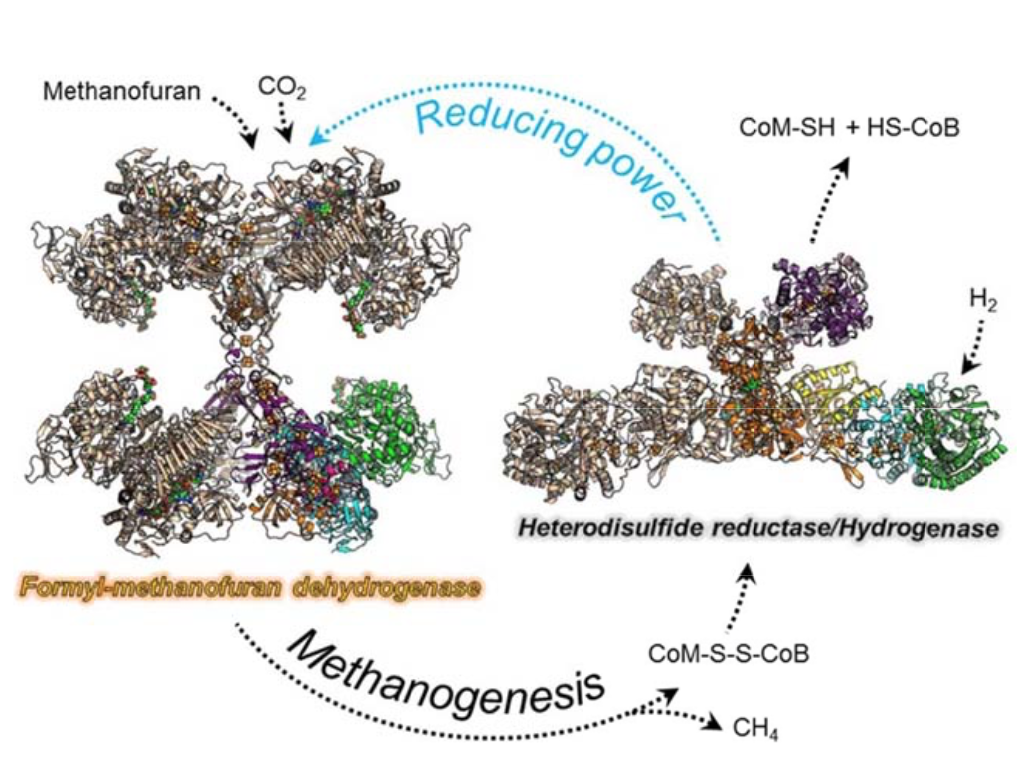- Presse
- Dr. Tristan Wagner: "A new way to fix CO2 without ATP ...
Dr. Tristan Wagner: "A new way to fix CO2 without ATP consumption, a lesson from methanogenic archaea"

A new way to fix CO2 without ATP consumption, a lesson from methanogenic archaea
Methanogenic archaea are able to produce methane, a potent greenhouse gas considered to contribute to global climate changes. The methanogenesis pathway constitutes their primordial source of energy, yielding approximately half of an ATP per formed methane. To save ATP, the hydrogenotrophic methanogens developed a unique CO2 fixation machinery, which uses low-potential electron donor such as reduced ferredoxin. The heterodisulfide- reductase:hydrogenase complex (HdrABC-MvhAGD) transfers energy to the CO2 fixation machinery by reducing ferredoxin with an electron bifurcation mechanism. This electron bifurcation is a new type of energy coupling, which allows the simultaneous reduction of ferredoxin and the heterodisulfide made of coenzyme M and coenzyme B (CoM-S-S-CoB). The CoM-S-S-CoB comes from the methane generation step catalysed by the Methyl- Coenzyme M reductase. During this presentation I will explain the chemical tricks used by methanogens to couple the methane formation (last step of methanogenesis) to the CO2 fixation (first step of methanogenesis). The secrets behind the reaction of these three enzymes will be unveiled through their crystallographic structures.
